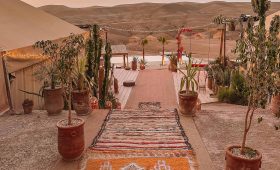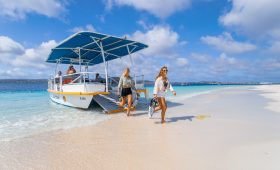Coloane Village: A Unique Destination in Macao
History
Coloane Village, located on the southwestern coast of Coloane, Macao, has a rich history that spans centuries. Originally known for its fishing and salt production, the area was annexed by Portugal in 1864. This move aimed to expand Portuguese influence and address piracy issues that plagued the region. The village’s architecture reflects a blend of Chinese and Portuguese styles, with traditional temples and colonial-era buildings lining its streets.
Portuguese Influence
During the colonial period, Coloane served as a strategic point for trade and defense. The Chapel of St. Francis Xavier, built in 1928, stands as a testament to this era. Located at the eastern end of Eduardo Marques Square, the chapel is a notable example of Portuguese architecture in the village.
Chinese Heritage
Despite its colonial past, Coloane Village retains strong Chinese cultural roots. The Tin Hau Temple and the Tam Kung Temple are central to local religious practices. Visitors can experience the vibrant atmosphere during Chinese festivals, when the village is adorned with colorful decorations and hosts lively performances.
Natural Beauty
Coloane is known for its natural landscapes, offering a peaceful retreat from urban life. The island, once separated from Taipa by the bay of Seac Pai Van, is now connected by land reclamation projects. This has created the Cotai area, known for its entertainment and leisure facilities.
Coloane Hill
Coloane Hill, the highest point in Macao at 170.6 meters, is a haven for nature enthusiasts. The hill offers scenic hiking trails surrounded by lush vegetation. At the summit, hikers are rewarded with panoramic views of the village, Macao’s skyline, and the South China Sea.
Hac Sa Beach
Hac Sa Beach, or “Black Sand Beach,” is famous for its unique dark sand. The beach is a popular spot for swimming and relaxation, with several beachfront restaurants offering fresh seafood. The nearby Cheoc Van Bay is another favored swimming location, providing stunning views of the South China Sea.
Cuisine
Coloane Village is a culinary destination, especially for seafood lovers. The village’s restaurants serve a variety of fresh seafood dishes, reflecting the area’s maritime heritage. A visit to Coloane is incomplete without trying the renowned Portuguese egg tarts, a delicious blend of Portuguese and Chinese culinary traditions.
Seafood Delights
Seafood is a staple in Coloane, with dishes ranging from grilled fish to crab specialties. The traditional Macanese dish, “African Chicken,” is a unique fusion of Portuguese, African, and Chinese flavors, offering a distinctive taste experience.
Portuguese Egg Tarts
Portuguese egg tarts are a local favorite, known for their flaky crust and creamy custard filling. These pastries can be found in bakeries throughout the village and are a must-try for any visitor.
Getting There and Local Transportation
Coloane Village is easily accessible from Macao International Airport, which is a short taxi ride away. Buses and car rentals are also available for those traveling from the airport or other parts of Macao. Once in the village, exploring on foot is recommended due to its compact size. Bicycles are available for rent for a more leisurely exploration of the area.
Best Time to Visit
The ideal time to visit Coloane Village is during the spring and autumn months when the weather is mild and pleasant. Summer can be hot and crowded, so checking the local weather forecast before planning your trip is advisable.
Summary of Facts
- Coloane Village is located in Macao and is known for its historical and cultural blend of Chinese and Portuguese influences.
- The village offers natural beauty, including Coloane Hill and Hac Sa Beach.
- Coloane is famous for its fresh seafood and Portuguese egg tarts.
- Access to Coloane Village is convenient, with Macao International Airport nearby.
- Local transportation options include walking and renting bicycles.
- The best time to visit is during spring and autumn for favorable weather conditions.




